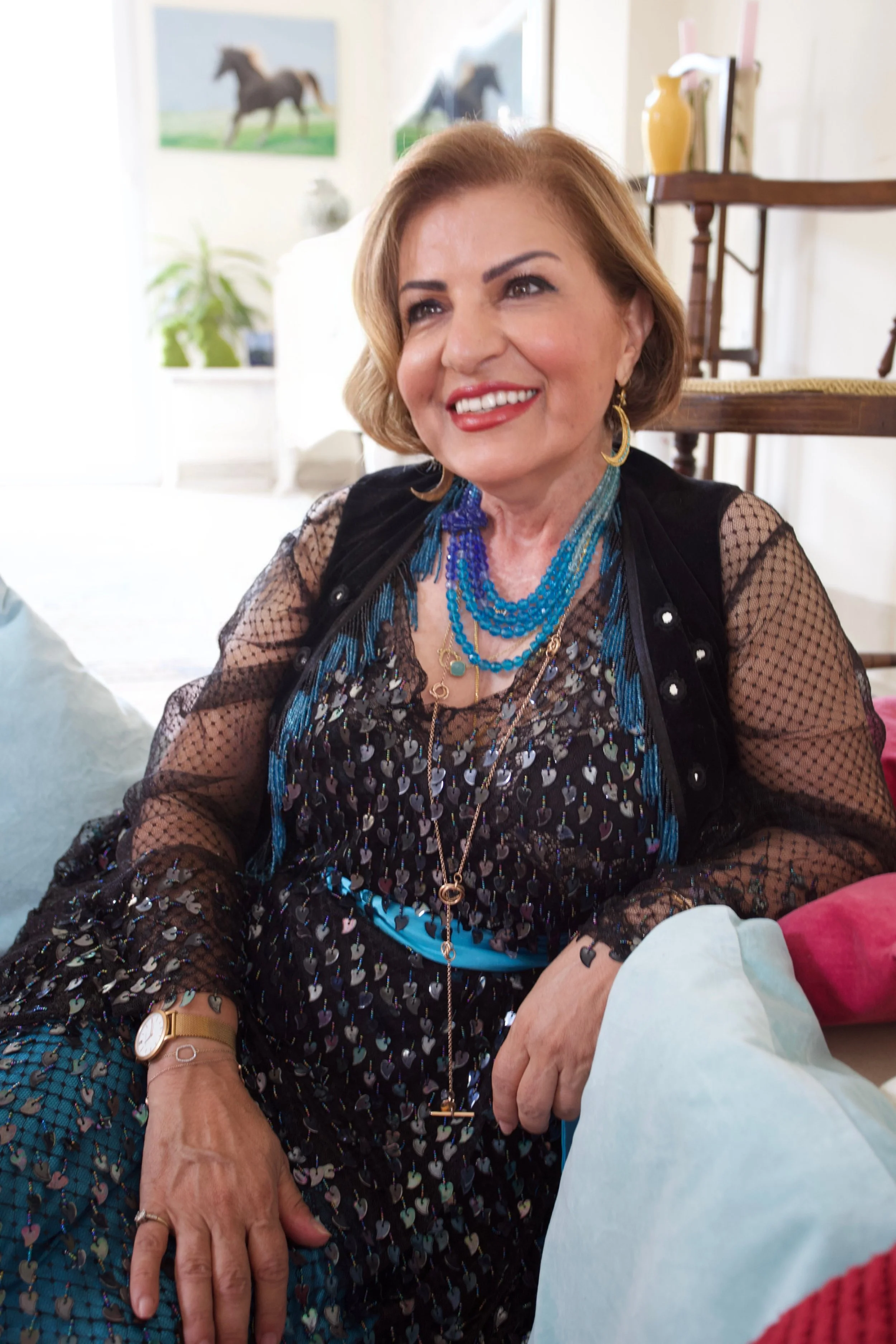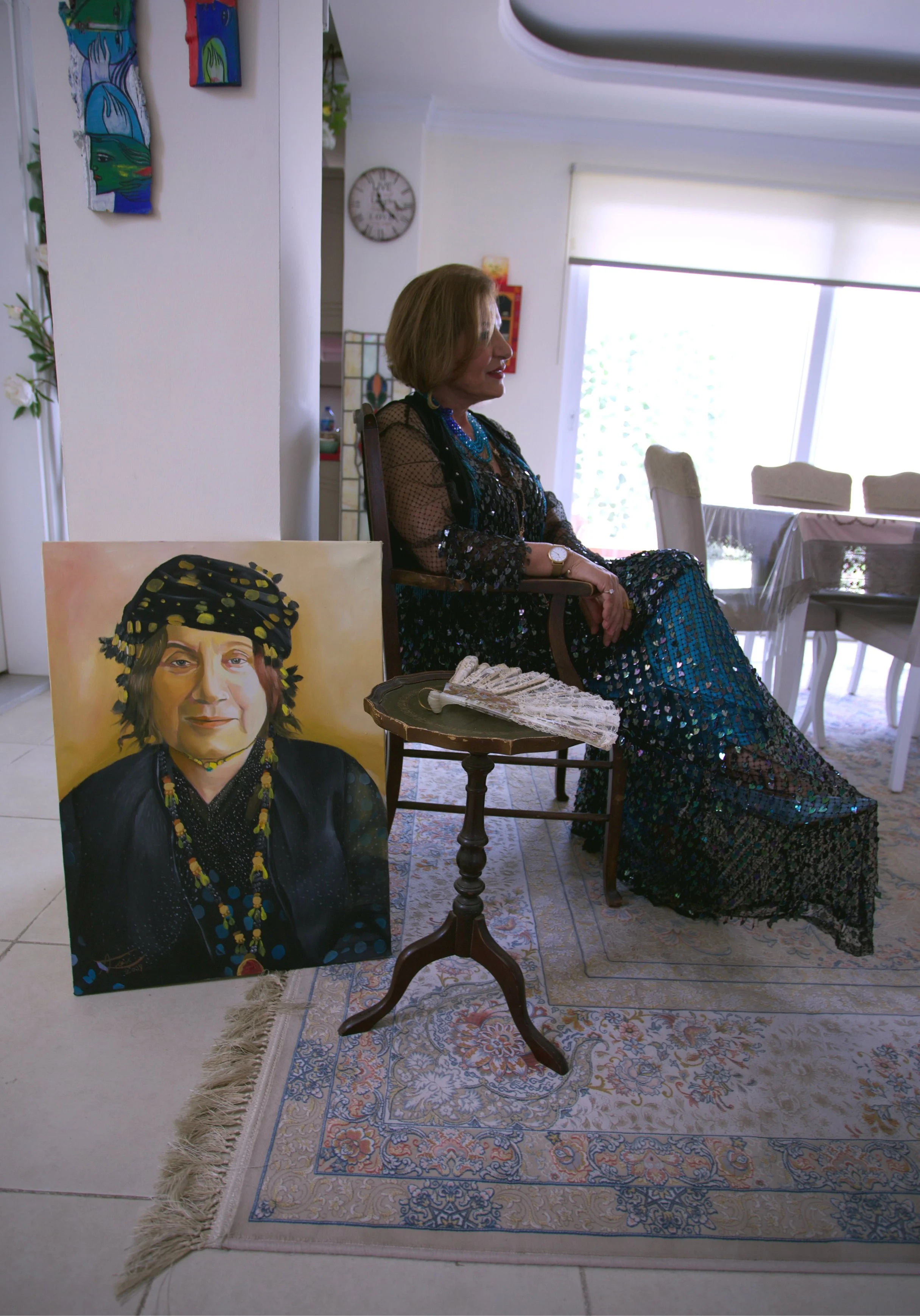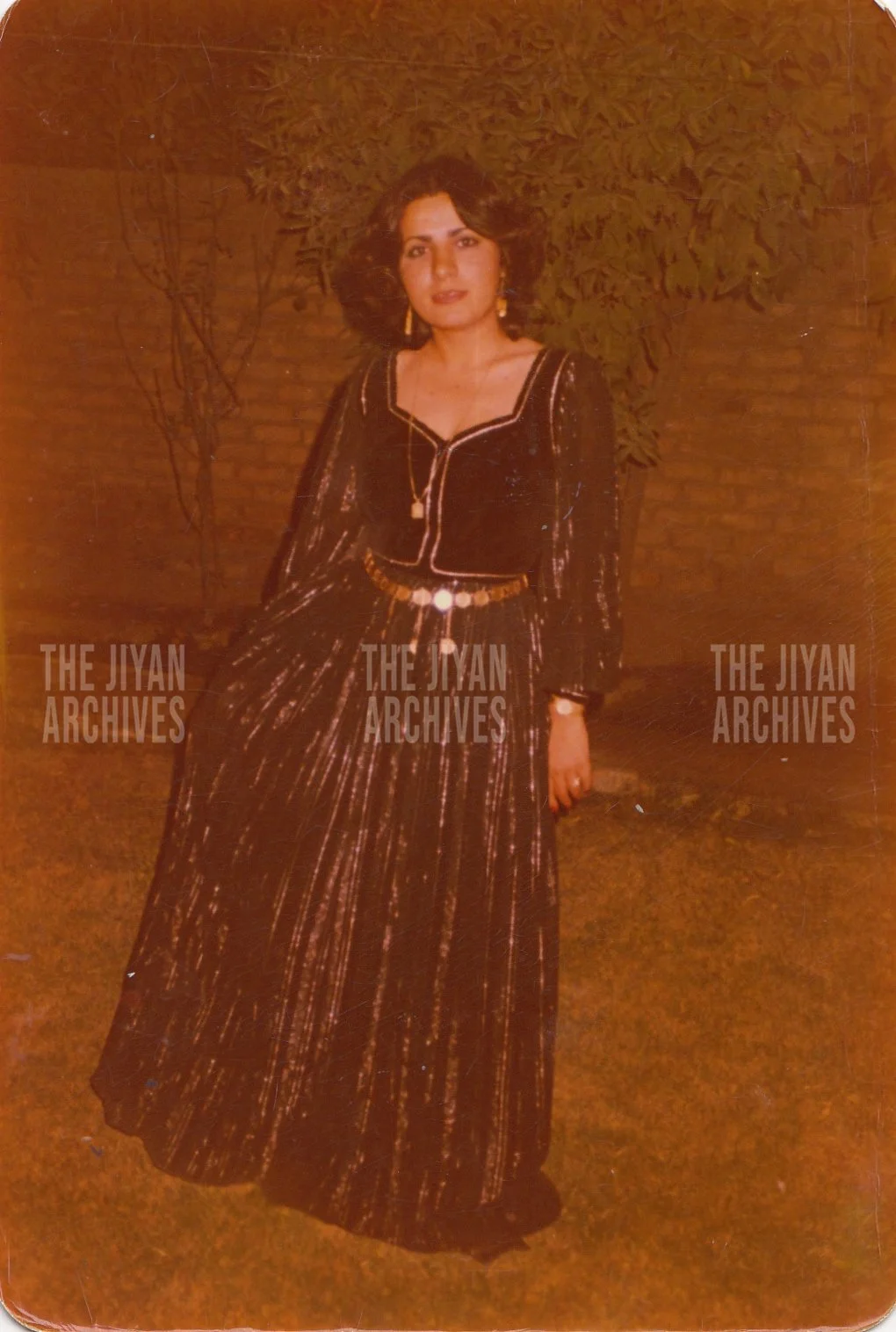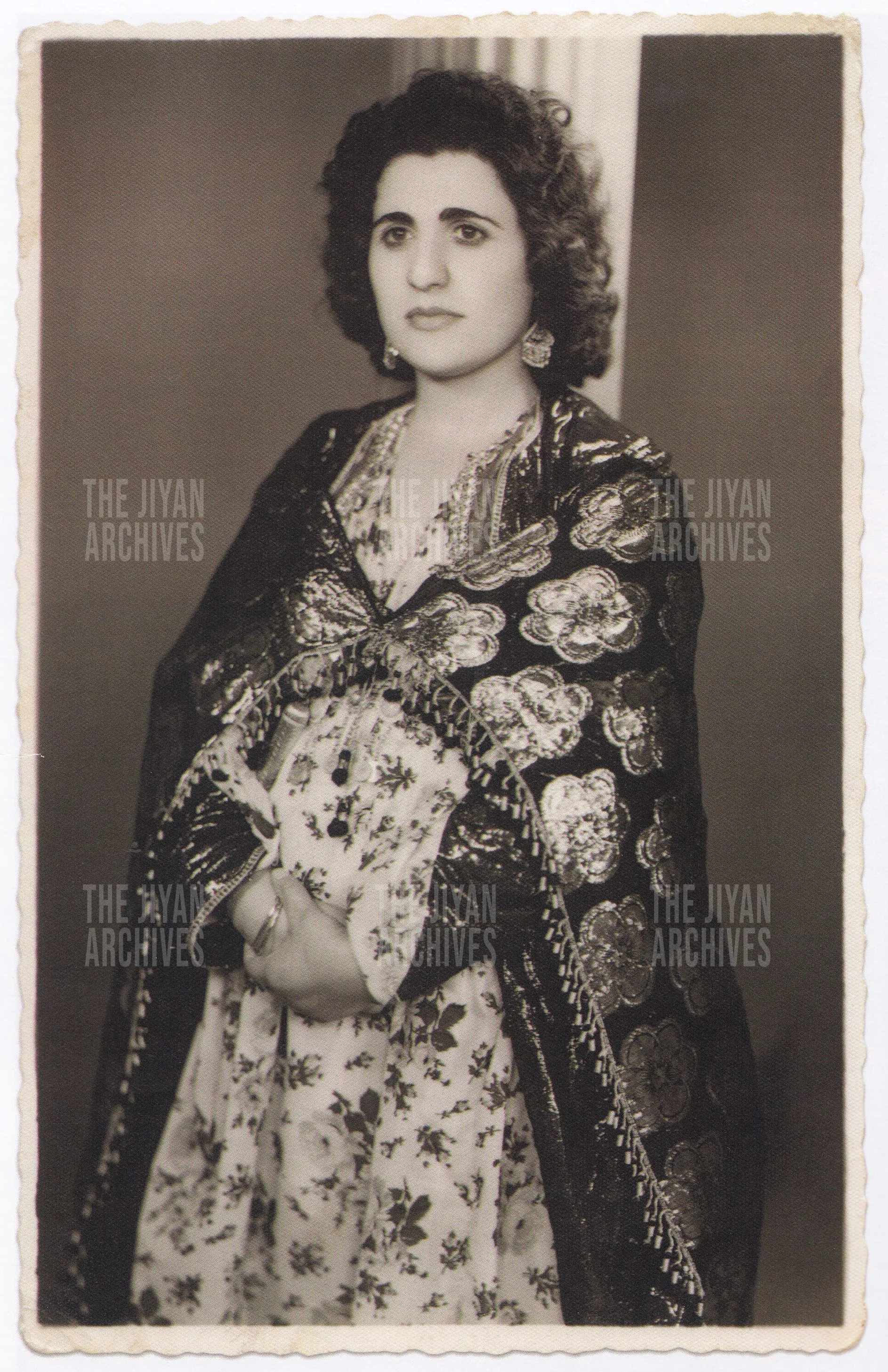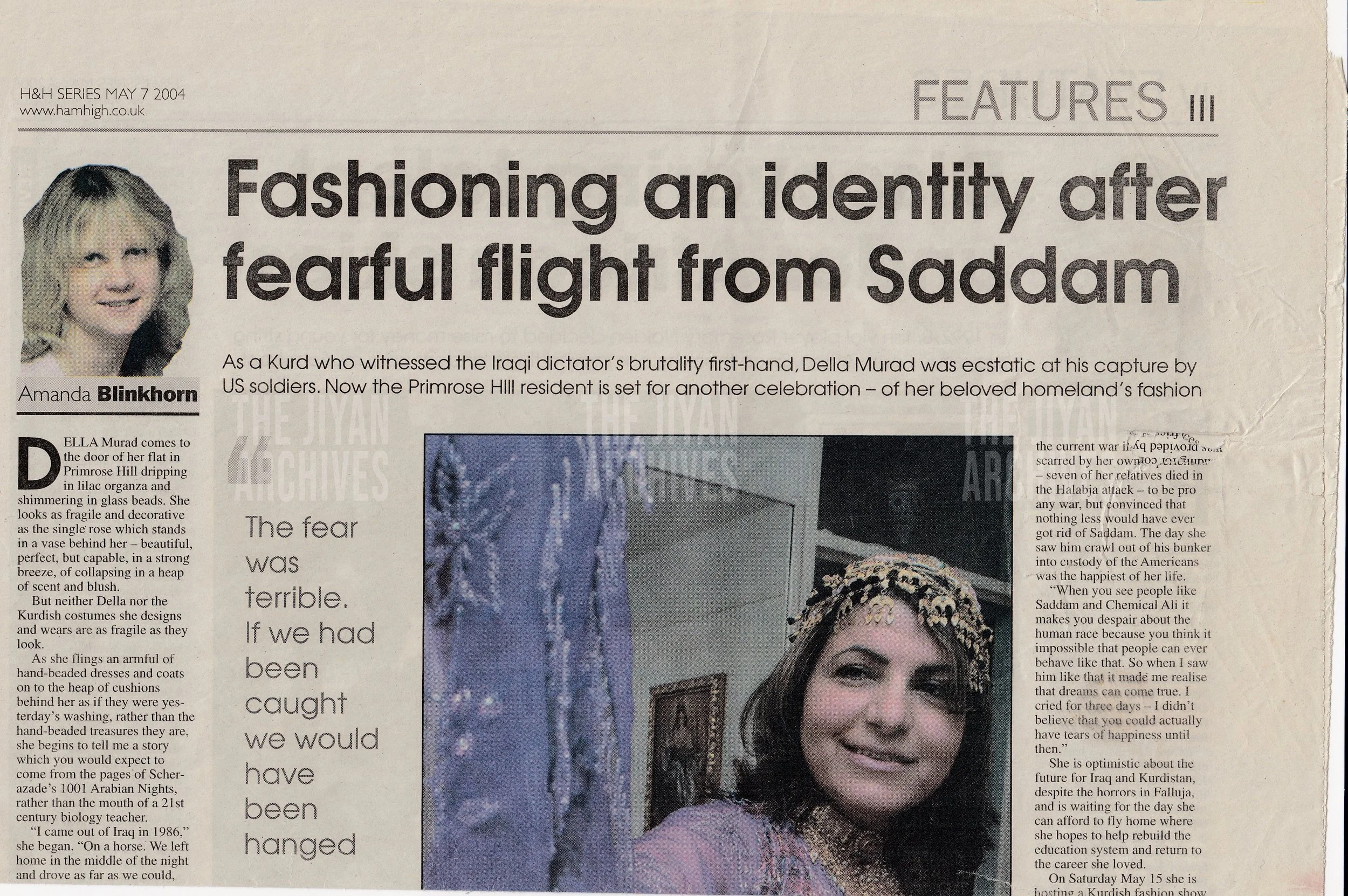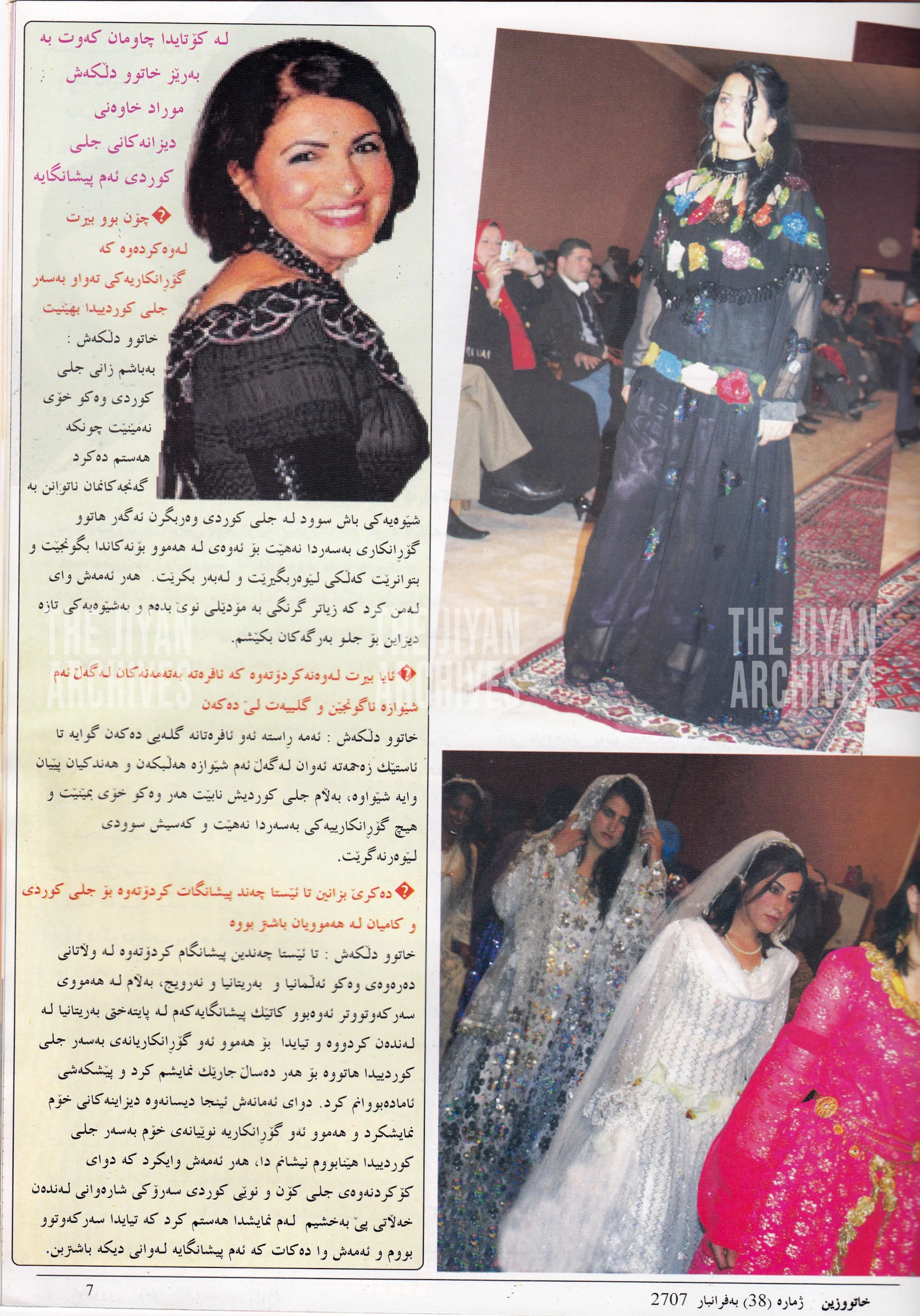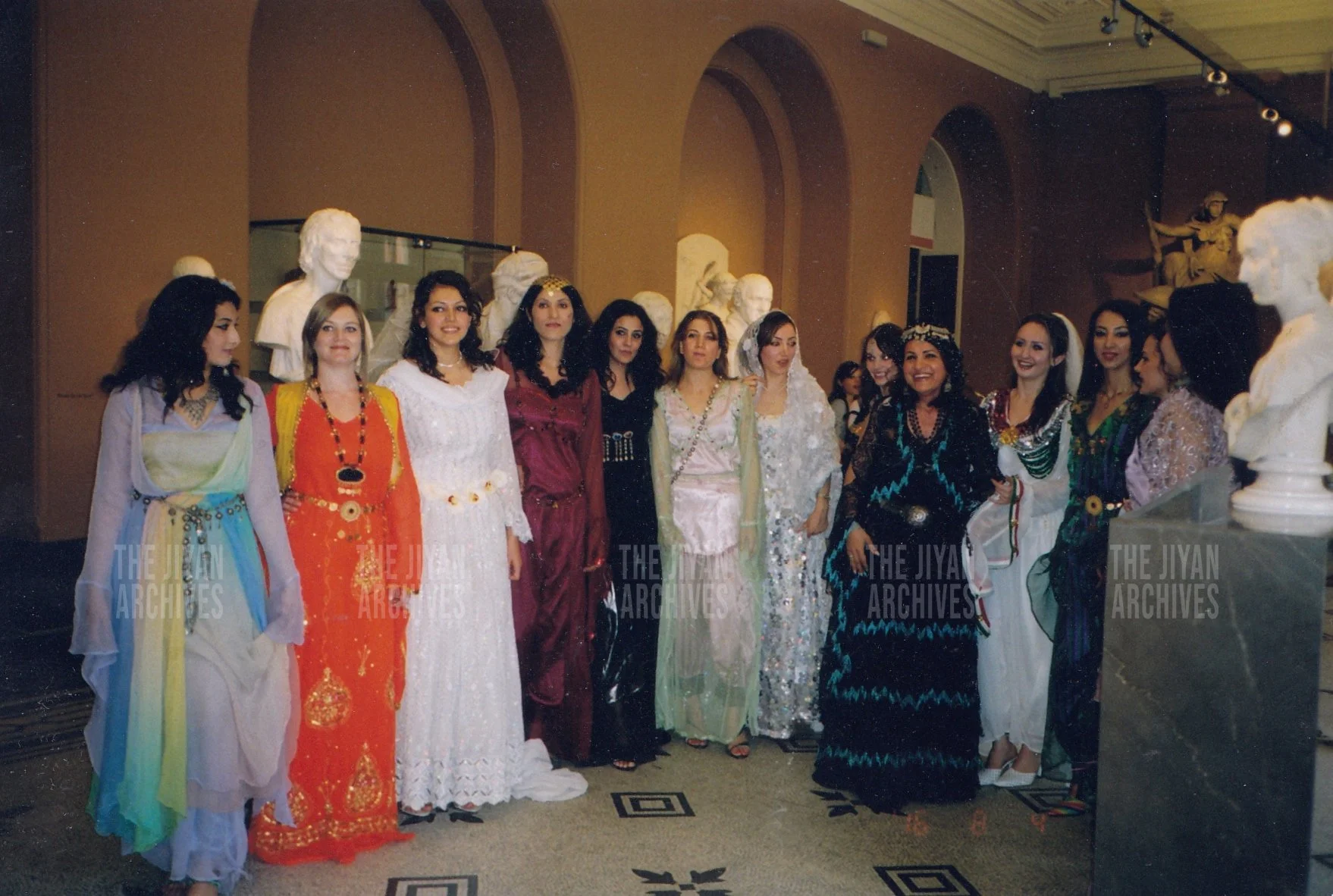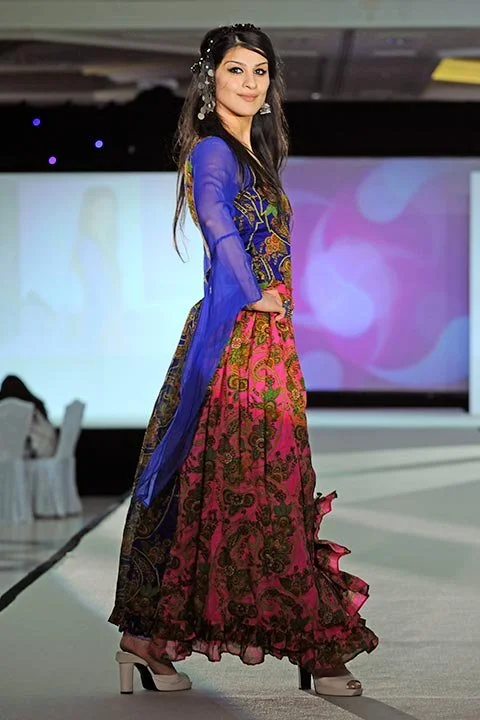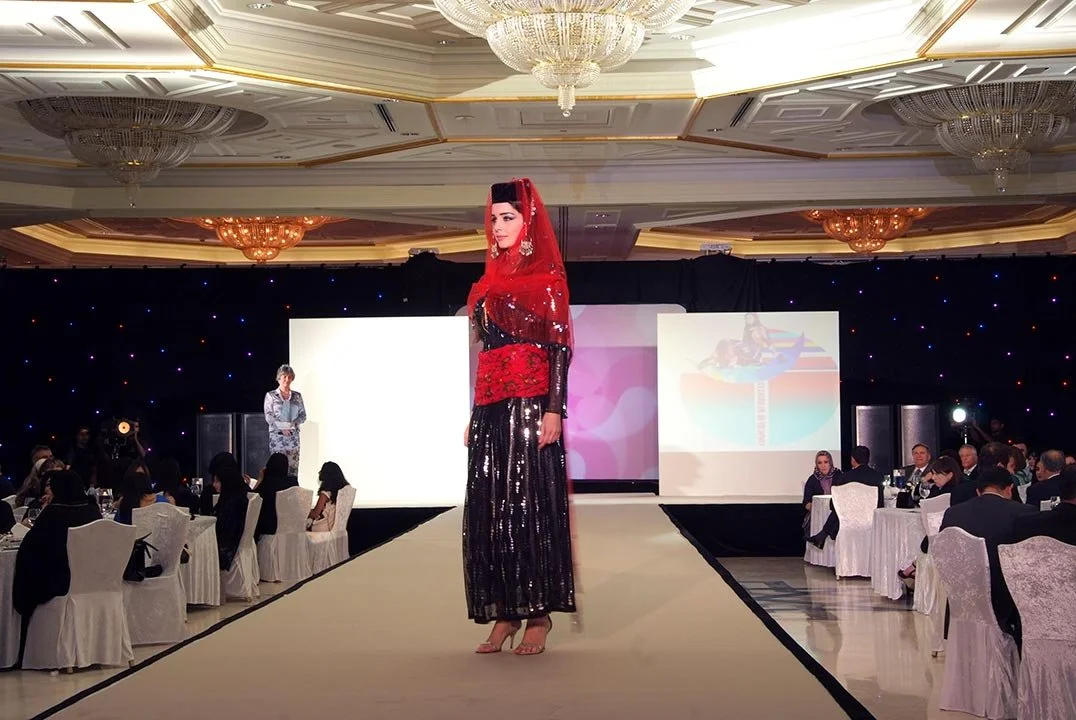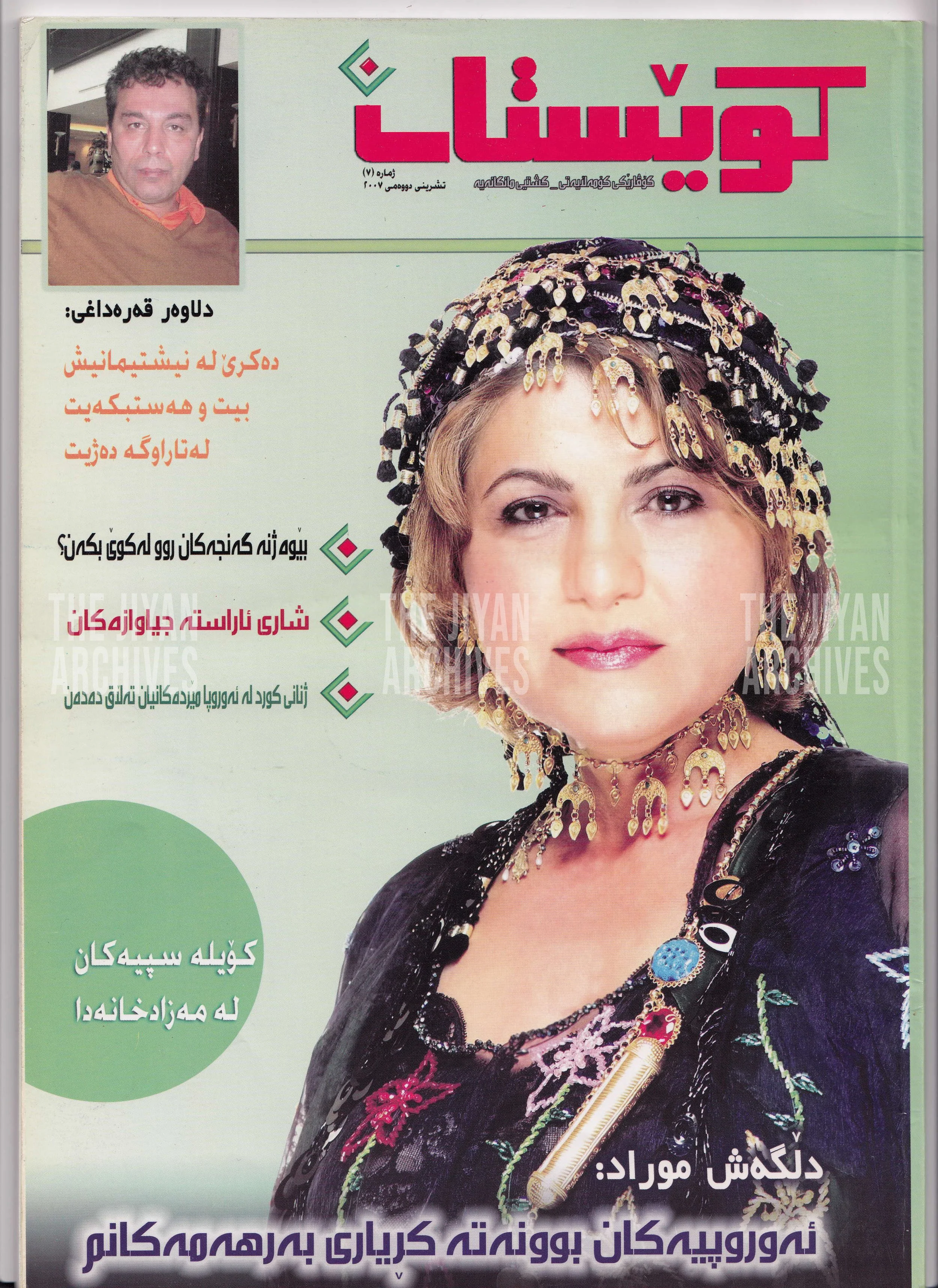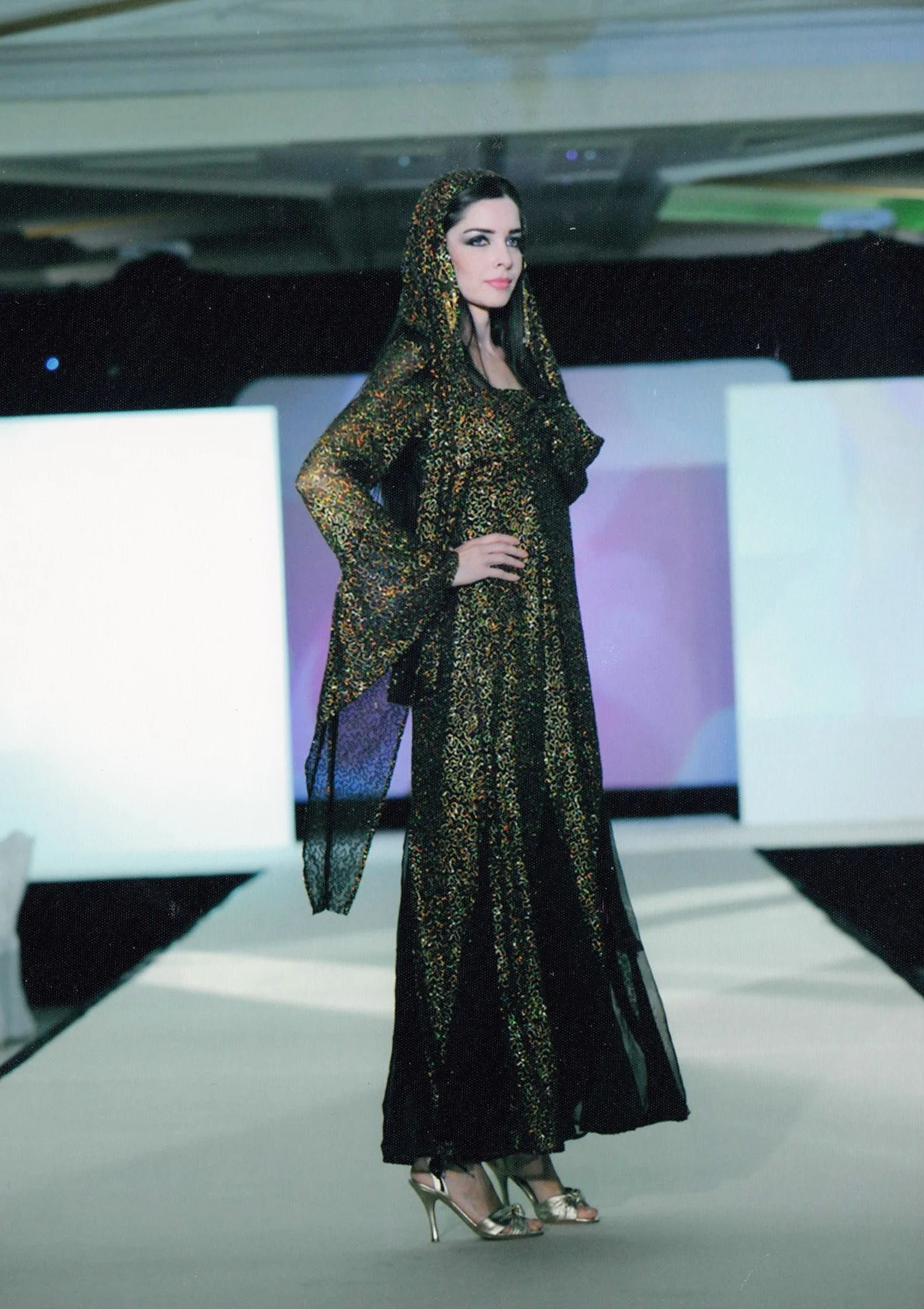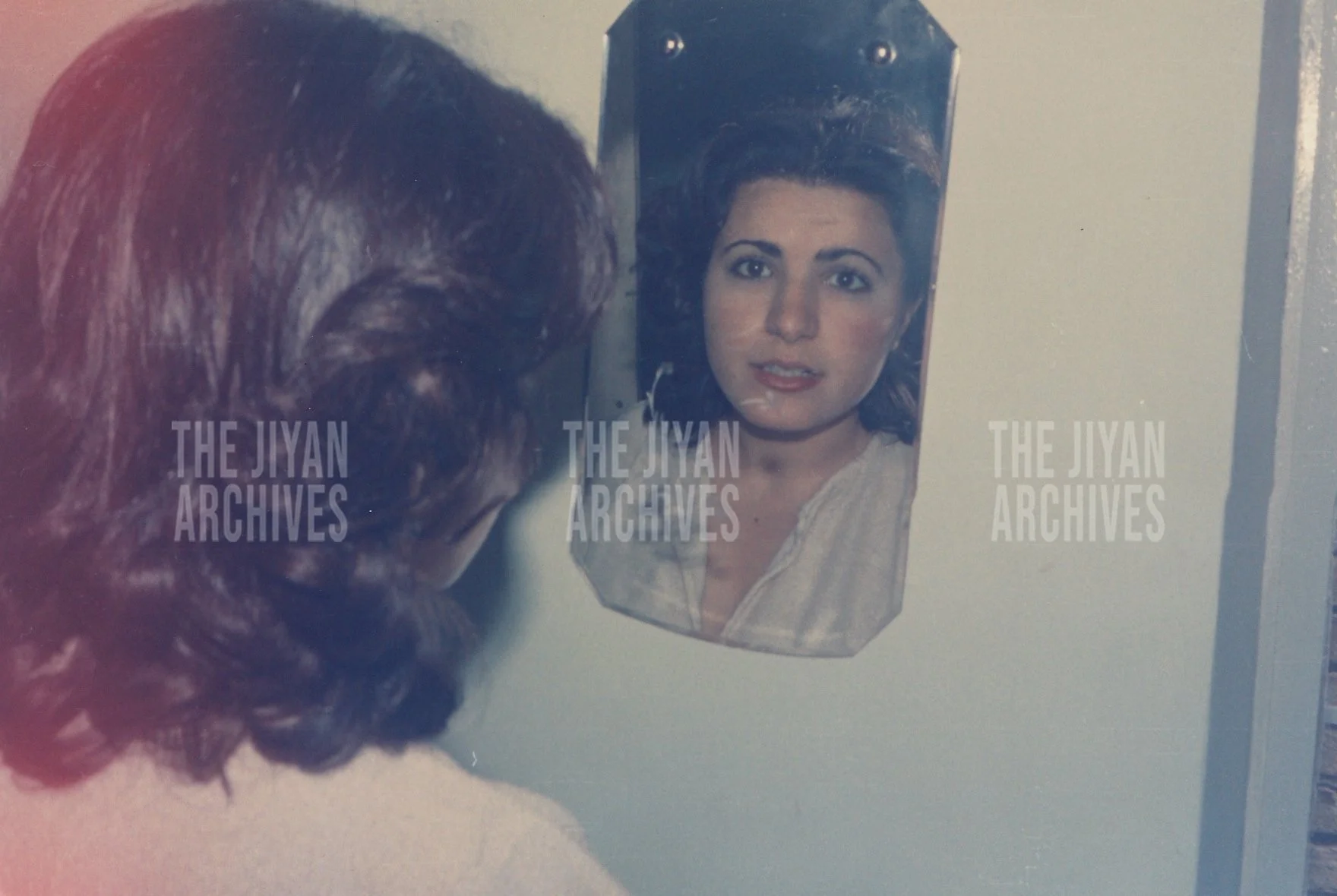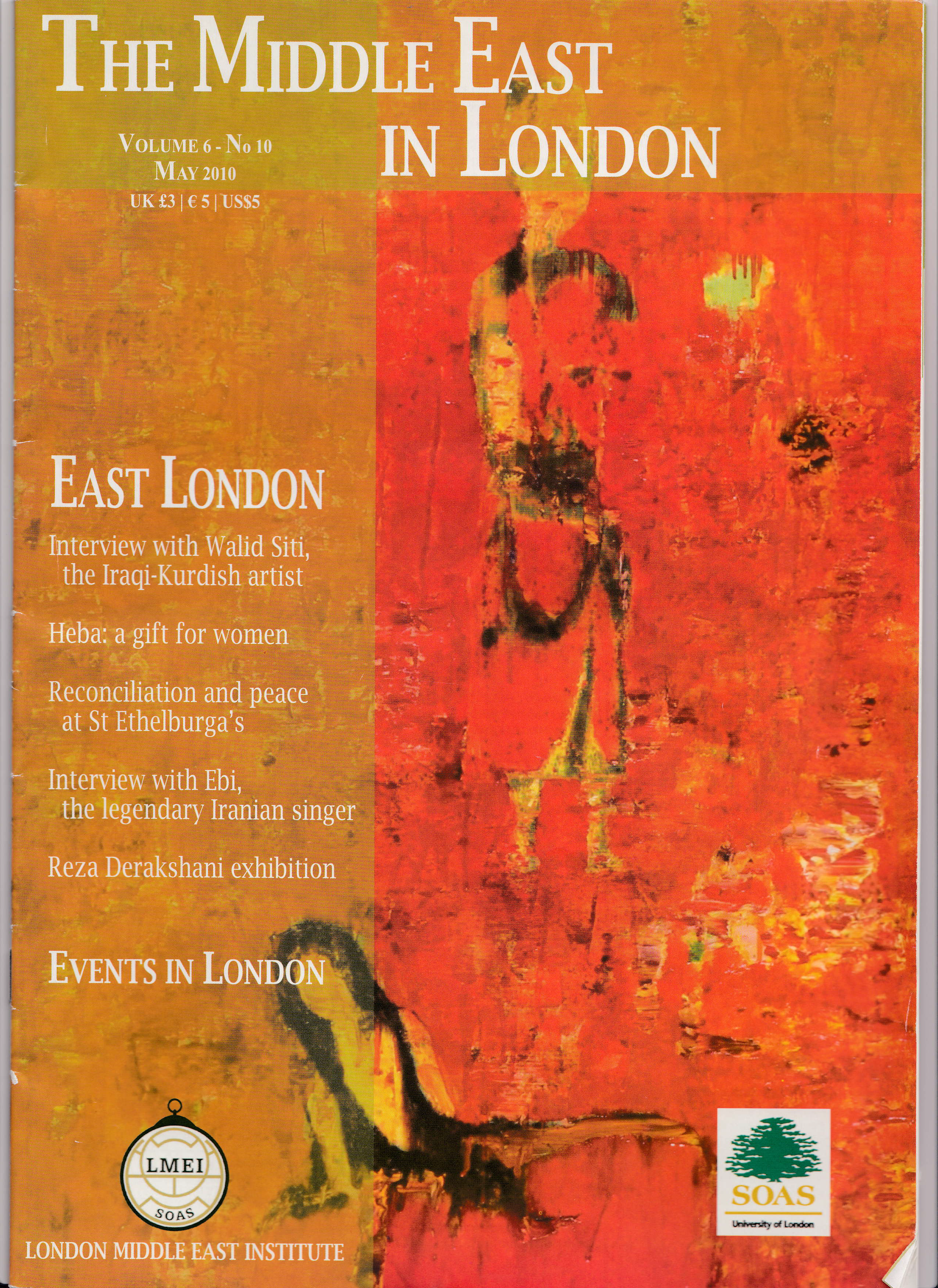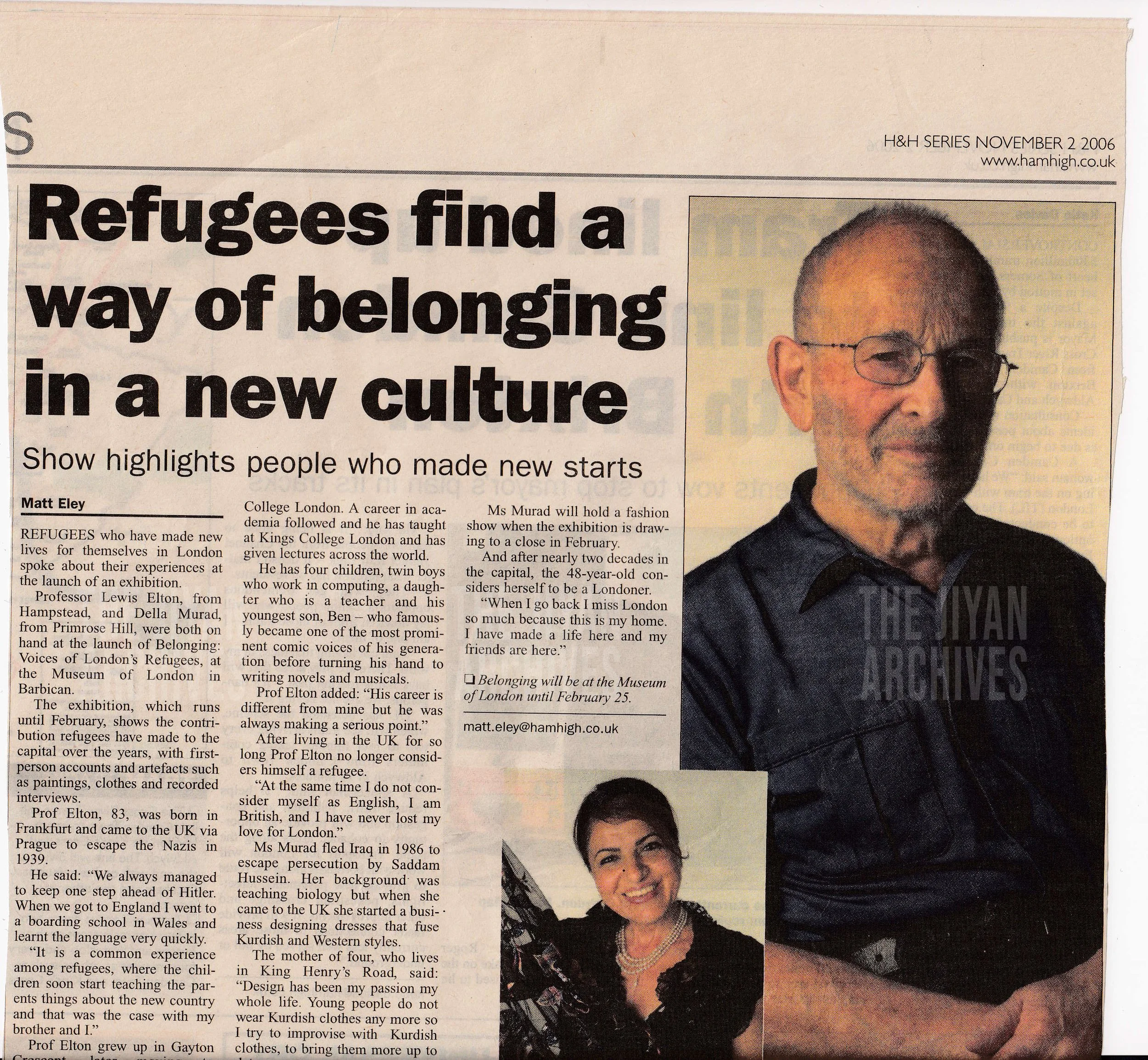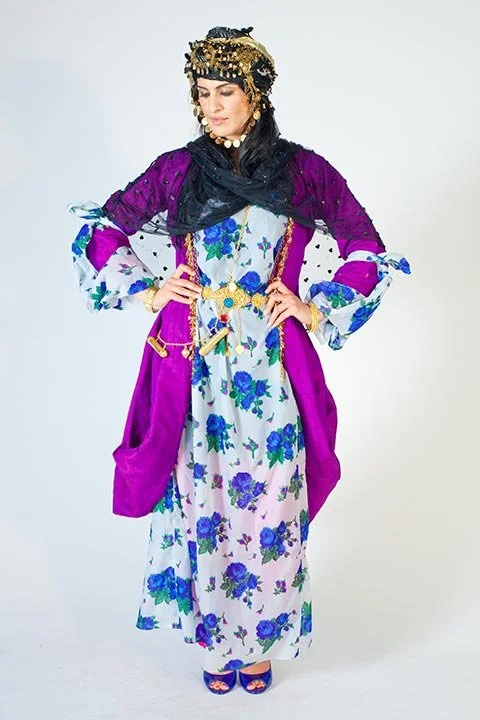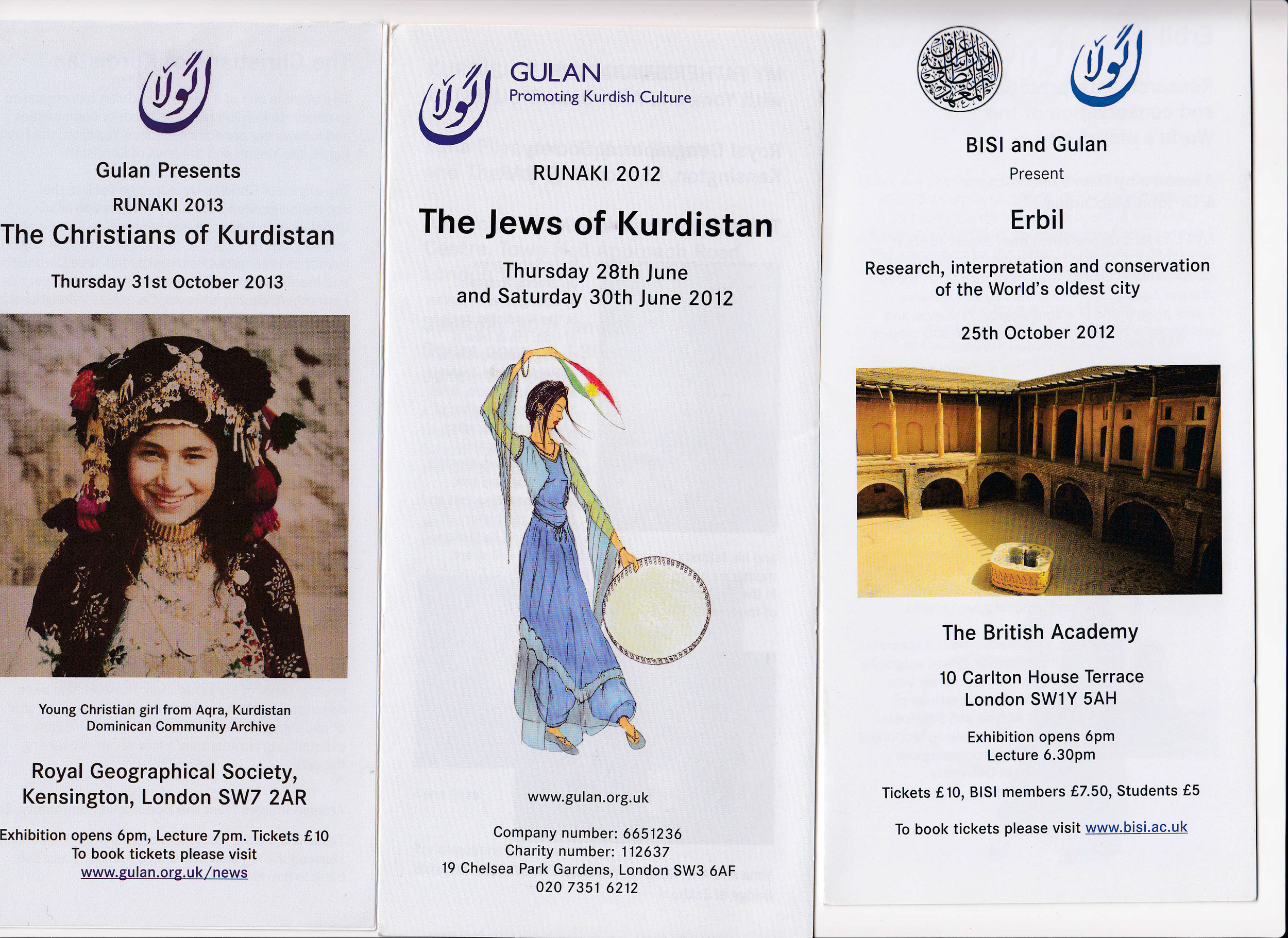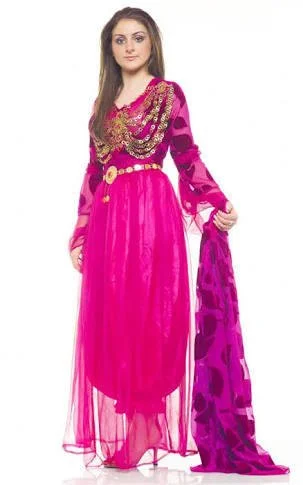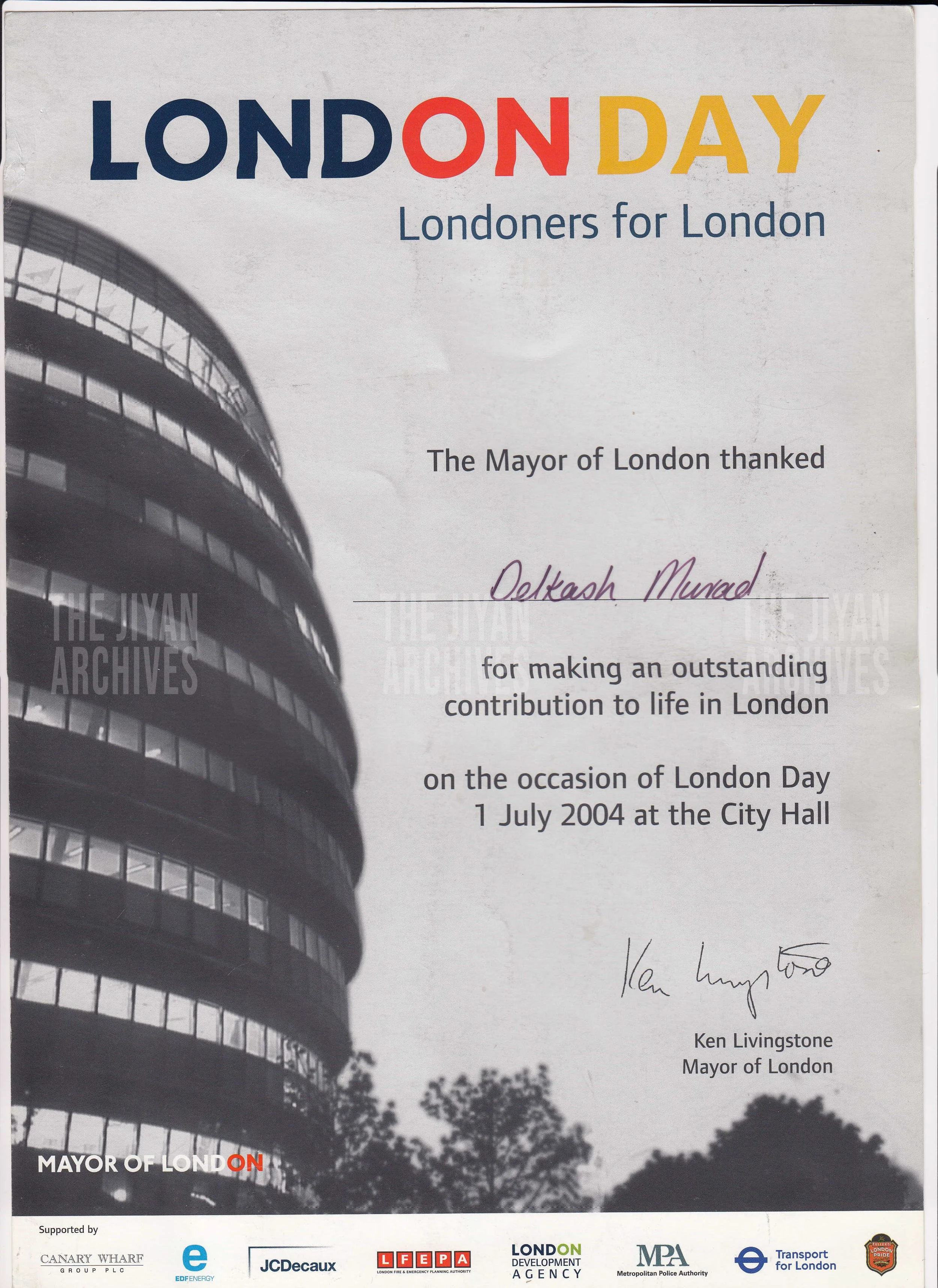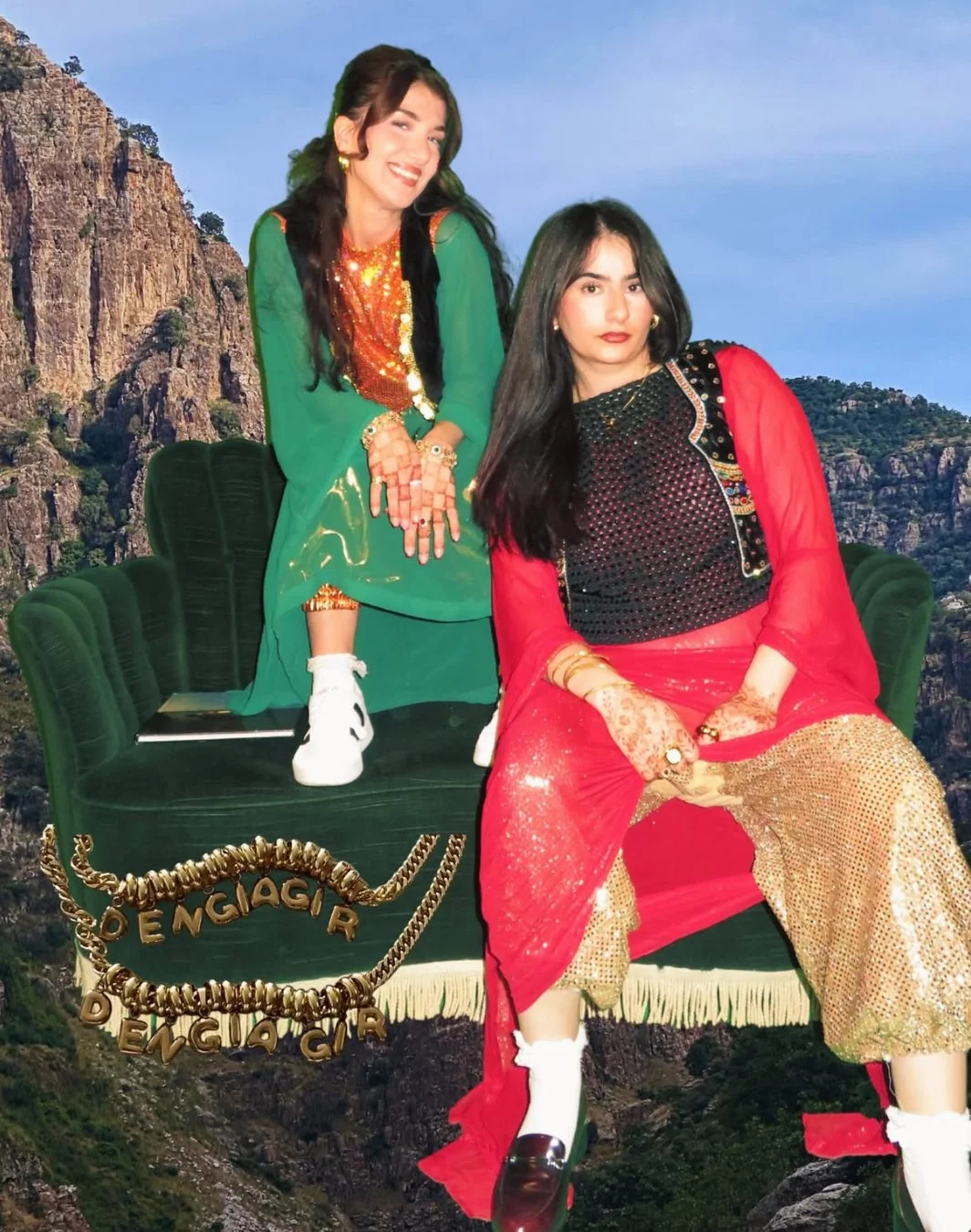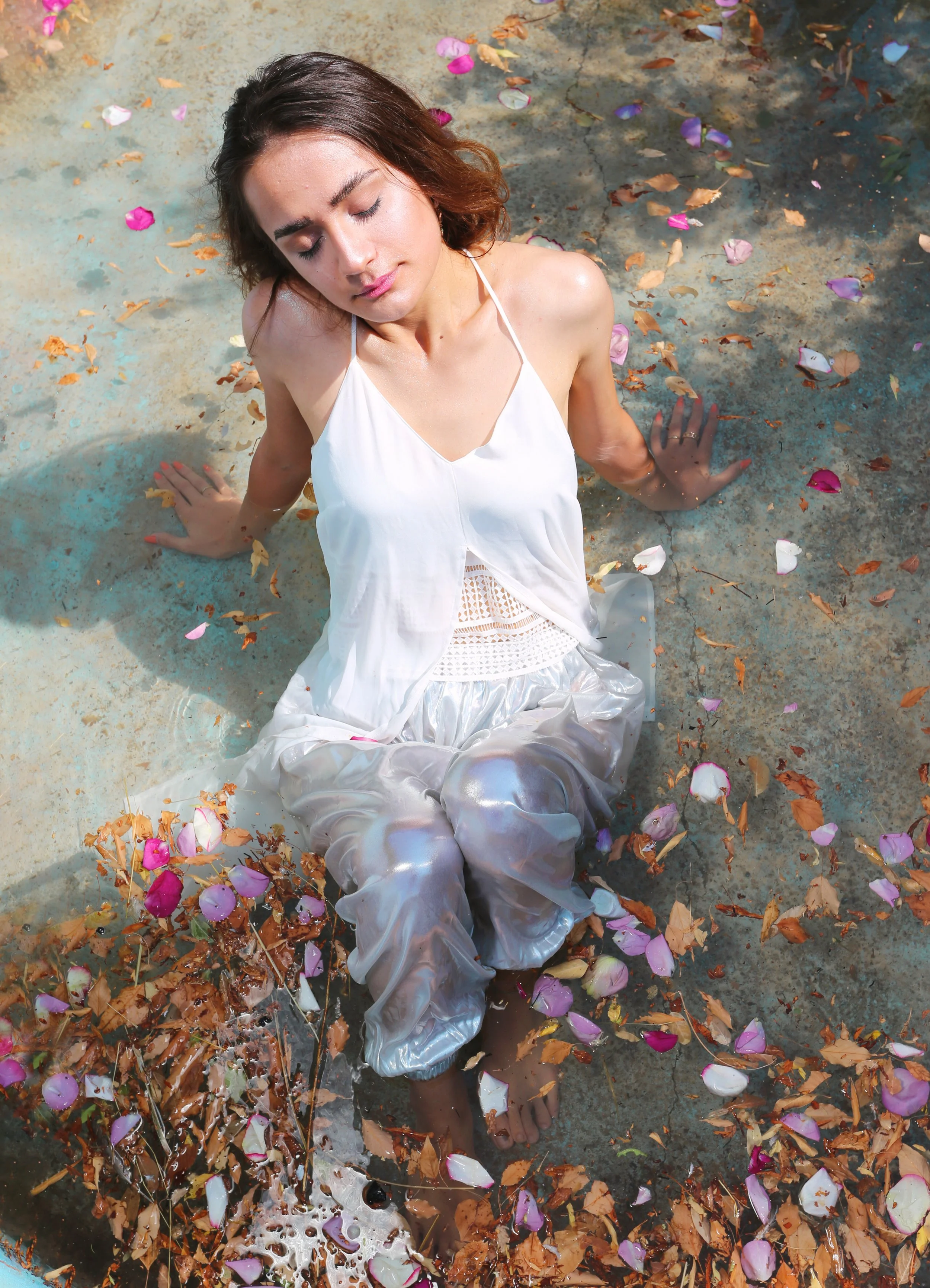Della Murad: The Matriarch of Modern Kurdish Dress
In the summer of 2021, I sat down with Della Murad in her home in Erbil, Kurdistan. We spent the afternoon together - drinking tea, talking about her life, and wandering through her archives. Wardrobes opened to reveal decades of work: dresses heavy with history, pieces of fabric yet to be sewn and some pieces so old they carried the soft scent of another era.
Della is more than a designer. She is the woman who took the Kurdish dress, once confined to the private sphere, and placed it under the spotlight, making it impossible to ignore. For decades, she has been the leading voice, an innovator, a preserver - the overall Godmother of Kurdish fashion. I grew up with Della’s work as a constant backdrop - it is impossible to speak on the elevation of the Kurdish female dress without giving Della Murad her flowers. Her dresses weren’t just clothes. They were declarations of identity. Bold splashes of colour, the metallic glint of coins stitched into a hem, the soft swish of layered fabric that carried with it an entire identity - the daring infusion of modernism here and there.
From the start, Della’s work was an act of resistance. In a world where Kurdish identity was too often pushed to the margins, she brought it to the front - and she did it in silk, velvet, handwoven cloth, and colour that refused to fade under oppression. During an era where it was almost a duty for Kurds to play a role in the diaspora to push for cultural visibility, Della’s choice of weapon was her needle and thread.
Photos: Images of Della Murad in her designed dress at her home in Kurdistan, captured by Raz Xaidan.
A Childhood of Colour
Della was born in Halabja and left for Baghdad at the age of two. She remained there until she completed her university studies. Her relationship with fashion began long before leaving Baghdad. Growing up in Baghdad, she was the little girl who “didn’t want to wear the same clothes twice.” She remembers watching her neighbours - hair styled to perfection, fabrics catching the sunlight - and she would run home to replicate their looks. Baghdad in those days was known to be a city of colour and texture. “People were very fashionable,” she remembers. “You could see colours everywhere, styles, trends - it was just so vibrant.”
Her First Muses
Della’s creative instincts were shaped early by those closest to her. “My mum has the most beautiful style, and the way she mixes colours is just amazing,” Della says. Her aunt, Aftaw Mohamed Ahmed, was equally formative and described as “a beautiful, strong woman” Both encouraged her work from the beginning. Her aunt would hunt down jewellery for her designs, and her mother sent her copies of traditional Kurdish jewellery as soon as they became available. Della’s father worked as a textiles merchant in Iraq and Kurdistan, filling their home with bolts of fabric sourced from far beyond its borders, all destined for the bustling markets across the country. Though he never claimed to understand her world of fashion, he championed her spirit. “You’re doing something great,” he would tell her. “I don’t understand it quite, but you’re doing something great.”
Photos: Della Murad in Baghdad in 1981 and a portrait of Della’s aunt, Aftaw Mohamed Ahmed.
A Staircase and a Turning Point
Della realised that her true path was in Kurdish fashion while she was in Germany. In 1989, Della was at a formal event among ambassadors and consuls, wearing her traditional gold, sequined Kurdish dress, descending a wide staircase flanked by tall, echoing columns. The room fell into a murmur; heads turned, eyes followed her steps. People approached, curiously asking where her dress came from, mistaking Della for all identities but Kurdish. “It was something magical, using my dress to educate them on Kurdistan,” she says, reminiscing. “From that moment, I knew I had to promote our clothes, to push our identity.” A private love of clothing turned into a mission: to take Kurdish textiles out of private wardrobes and place them centre stage. That event in Germany gave her clarity of purpose: Kurdish fashion wasn’t just beautiful, it was a statement of existence.
Resistance in Thread and Cloth
From the very start of her design career, Della treated clothing as cultural storytelling. She wanted to preserve Kurdish dress, but not fossilise it. She studied colour theory, rejecting the old one-tone traditions of “one red, one blue,” and instead layered shades together like paint on canvas. Returning to Kurdistan in the 1990s was fashionably bittersweet. At weddings, she and her daughter were often the only women in Kurdish dress, as many opted for modern gowns or muted traditional styles. Determined to make tradition current, she introduced slimmer cuts, strategic zips, and even cropped dresses. In 2005, her cropped Mahabad-inspired dress with a smaller belt in place of the traditional wide one caused a stir. Her inclusive changes didn’t stop there; with conviction, she altered textures, added precise tailoring, and used zips to create clean, fitted lines, opting for materials that showed skin.
Della revealed more of the female figure and brought the derpê (the traditional trousers worn under Kurdish dresses) into the spotlight. “In my younger days, it hurt me to see my mother cover her derpê completely because of stigma,” she recalls. “So I went the opposite way. I made them shimmer with jewellery and made them visible, and now my mother no longer cares if hers are showing.” Her changes didn’t go unnoticed. In 2005, her daring reinterpretations of the traditional Kurdish dress broke the Kurdish internet, sparking conversations across communities and making waves well beyond Kurdistan. “Designers now don’t have that shock factor,” she says. “I already broke it for them.” She knew the risks. “Change is dangerous,” she reflects. But for every critic, there were letters, phone calls, and emails from young people proud to see their culture reframed. Kurdish women are rarely spared criticism when they dare to alter what has remained unchanged for centuries. Still, Della refused to let the negativity overshadow her determination to redefine the traditional Kurdish dress.
Scanned by Jiyan: Della Murad featured in the local London newspaper, May 2005 & in the Kurdish Magazine, Kwestan - Nov 2007 edition.
London: A Bigger Stage
London became more than a home for Della - it became the longest chapter of her life and the place where her creative career reached new heights. “I have to say, of all the places I’ve lived, London inspired me the most,” she says, “The architecture, the design, even in my own home, I’ve been influenced by the British style.” The diverse British community embraced Della’s work, and the Kurdish diaspora there celebrated it. Invitations poured in for her to stage fashion shows at major cultural events. “I had great support from the British community - they love what I do,” she recalls. “And the Kurdish community in London kept inviting me back. I did quite a lot of fashion shows for our community.” Backstage at these events, “It’s the girls in my clothes and me, we couldn’t be separated,” she says. Her designs became a rare point of unity, worn by Kurds from all four parts of Kurdistan. “What made me so happy was that my clothes became Kurdistani,” she says. “Kurdish women from the north, south, east, and west were all wearing my designs.” To see those colours and styles meet on a London runway was, in its own way, a political statement. For Della, London was never just a backdrop. It was the stage from which she could send Kurdish textiles, colour, and craft out into the world - a place where her work was not only seen, but supported and amplified.
Photo: Della Murad stood in line with her models, showcasing her Kurdish clothing line at the Kurdish Fashion event in London, 2007.
The Work of Gulan
Her most lasting work in London was also off the runway. Della Murad co-founded Gulan, a British charity promoting Kurdish art and culture in all its forms -from textiles to music to contemporary art. For more than thirteen years, Gulan has staged exhibitions and events that brought Kurdish and international audiences into the same space. Through Gulan, where she’s Artistic Director, Della has helped organise exhibitions, talks, and performances that brought Kurdish heritage into prestigious venues. The trustees of Gulan are evenly divided between British and Kurdish members, serving as a deliberate cultural bridge. Gulan’s work hasn’t only been celebratory; it’s been commemorative. Together with photographer Richard Wilding, Della designed a Remembrance Day patch in London, embedding Kurdish history into a British tradition of honour. For this, she received a minister’s certificate. The charity also became the staging ground for a project close to her heart: a visual record of Kurdish dress from every part of Kurdistan.
The plan was to travel, photograph, and catalogue the garments in their landscapes, alongside the women who wore them. The Victoria and Albert Museum had already agreed to stock the resulting book. Then ISIS came, and the project stalled. “It stopped my life,” she says. After ISIS, she stopped. For years, Della had poured herself into fashion shows, charity work, and cultural preservation, but the brutality of those years brought it all to a halt. “When the land’s in survival mode, the beauty of everything pauses,” she reflects. Fashion, for Della, had always been more than fabric - it was celebration, identity, and hope. And in those dark years post-ISIS, celebration felt impossible. Her last fashion show had been at the British Embassy, celebrating the Queen’s birthday. After that, she could not continue. “I saw people dying here (in Kurdistan), suffering under ISIS… it was like dark roots spread across our beautiful land,” she says.
A House for the Kurdish Dress
Over the years, Della's designs have graced some of the world's most prestigious cultural stages. In England, she has showcased her work at the Victoria and Albert Museum, the Museum of London, and the British Museum. In 2007, she returned home to produce the first-ever Kurdish fashion shows in Hawler and Slemani. Four years later in 2011, she brought Kurdish fashion to a new international audience with a televised show in Dubai titled 'Colours of Kurdistan', making it the first show of its kind in the UAE. Those showcased garments still hang in Della’s cupboards, her fingers brushing against them as she recalls the moments they once moved down the catwalk. If Della could make one thing happen now, it would be a design house in Kurdistan. Not a museum, “Museums are for cups and plates,” she laughs, a design house is a “living, breathing space” where people could walk through regions and decades in a single afternoon. She would open as she always does: ten historic dresses from across Kurdistan to set the foundation, followed by her reimagined designs. She sees it as a place to learn, to touch fabrics, to hear the gentle rustle of layered textiles, to celebrate regional designs “Never say never,” she says when I ask if it could still happen.
Photos: Della’s designs on the runway in Dubai from her ‘Colours of Kurdistan’ 2011 show.
A Legacy Woven in Thread
For those of us who grew up familiar with her work, Della’s legacy extends beyond fabric; it lies in what she has made possible. She has demonstrated that clothing can embody history, defiance, and pride all at once. Her advice to young creatives is both liberating and straightforward: “Be bold. Move forward without looking back in fear.” Just as importantly, she emphasises the importance of tolerance: “Don’t let others’ opinions limit your creativity, and don’t diminish anyone else’s creativity either.” In her hands, the Kurdish dress has never been just a relic; it has been vibrant, shimmering, moving, and speaking for us in every stitch. Today, no celebration of Kurdish fashion can be complete without recognising Della Murad’s efforts - a woman who paved the way and broke barriers in Kurdish fashion at a time when support was scarce and the challenges were many.
To learn more about the work Della Murad’s current work, visit Gulan.
Further images from Della’s Archives:
Writer’s Note:
Della Murad was among the very first - if not the first - to bring the derpê out from under the dress and into the spotlight. What was once hidden, she made shimmer with pride. The images below from Kurdish-fem led shoots show how this bold act remains a statement in Kurdish fashion to this day: Dengi Agir and Rebirth

